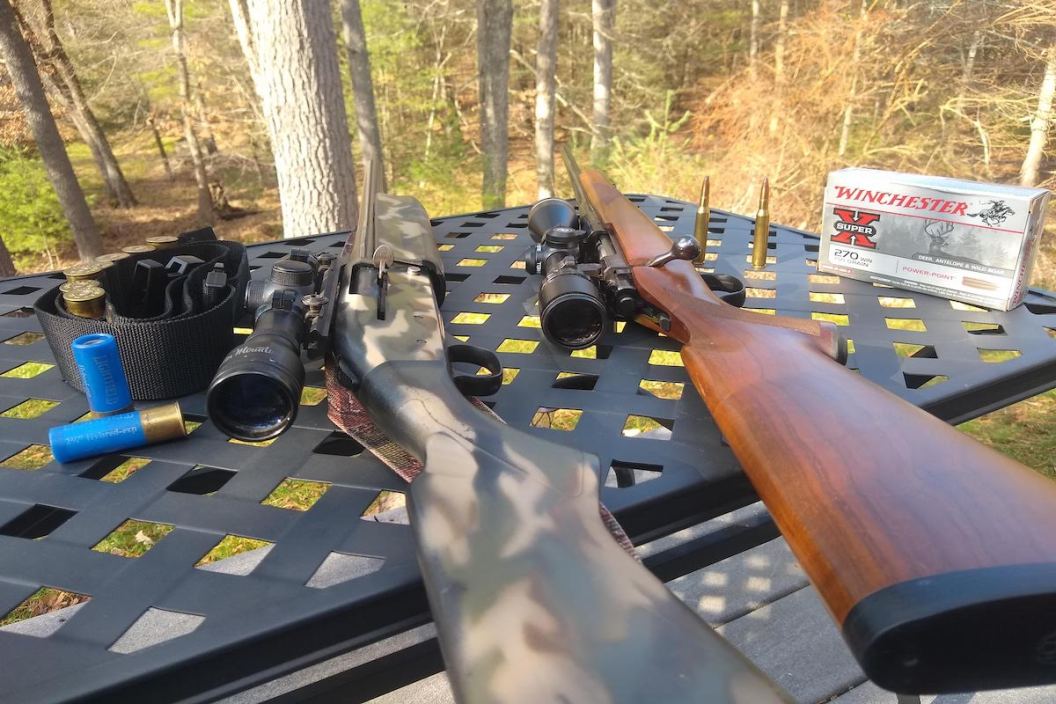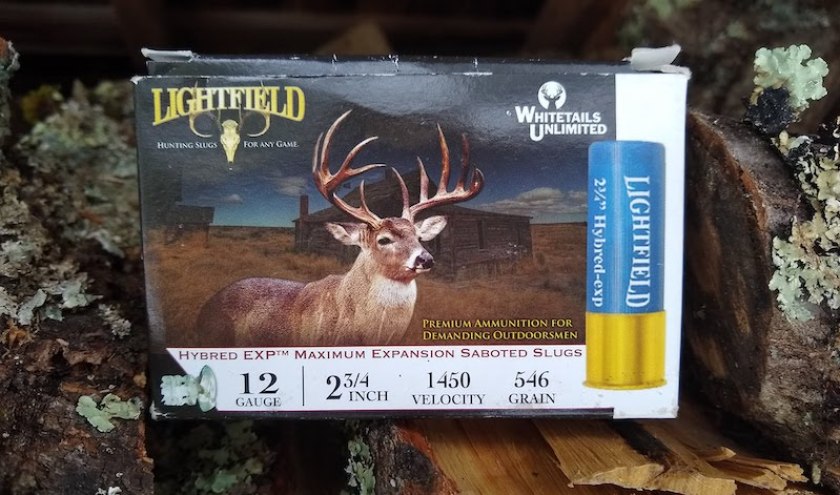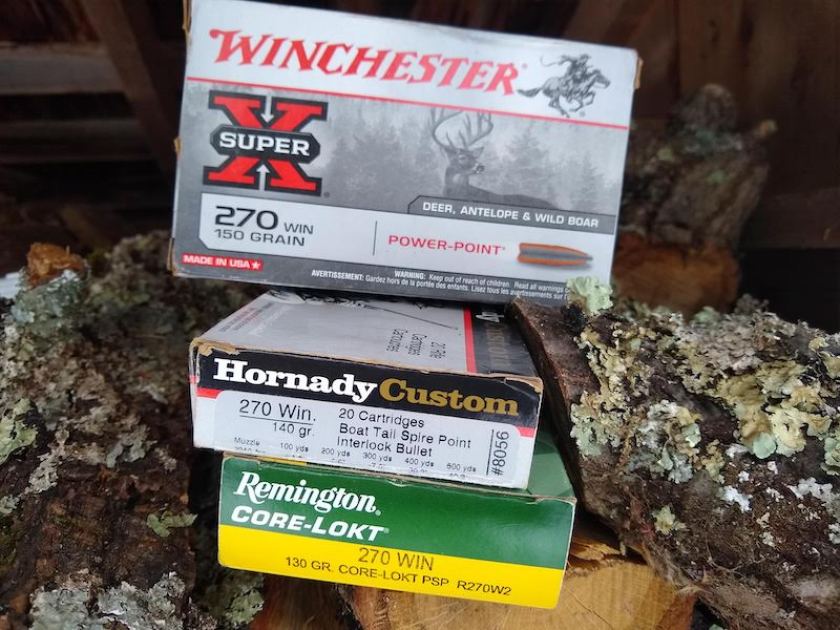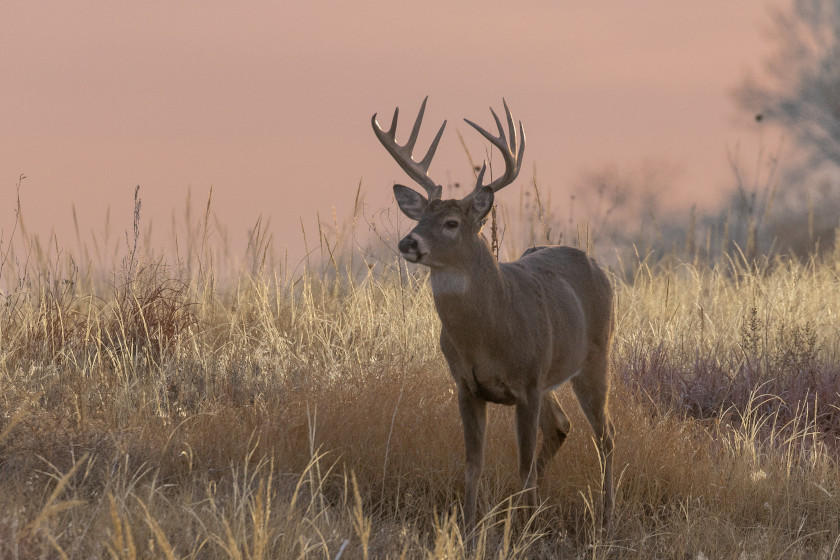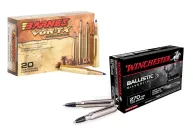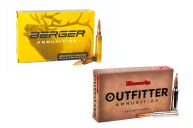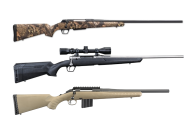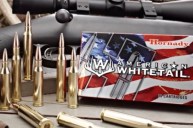Since we like a good exchange of opinions as much as anybody else, let's take a close look at two very good types of ammunition and their effectiveness at putting whitetail deer on the ground. Many hunters started off with a slug gun before graduating a mighty rifle. Still others started out with a rifle and may have never looked back.
As game laws changed to reflect safety advancements, shotgun hunters were rewarded with the ability to use rifled barrel technology in many states that previously had restrictions. Many hunters made the switch since the accuracy and stopping power of the newer rifled ammunition was much more advanced. It may seem like comparing apples and oranges, but can it match the speed, power, and accuracy of a hunting rifle?
We'll go over some of the ballistics and other topics such as the Lightfield Hybred (the spelling that they use) 2-3/4" vs. a standard 150-grain Winchester load. This is a unique battle between two completely different types of ammo. It's rather interesting to see how a trusty 12-gauge load stacks up against a high powered rifle round.
The 12-Gauge: Lightfield Hybred Slug
My favorite slugs are the 12-gauge Hybred-exps made by Lightfield. Sadly, Lightfield does not make any of their excellent ammunition anymore. Let's hope that changes sometime in the future, but we can still look at how great of a deer-stopping round it was and why many of us didn't mind paying for it. There are many 12-gauge slugs today that still produce similar ballistics, so it's still a valid test.
Back in the 1990s about the time that it became legal in New York, I purchased a rifled barrel for my 12-gauge autoloader, and I've never looked back. Those of us who began their deer hunting careers with the old smooth barrel shotguns and "slugger" ammunition will tell you that we stopped many deer but not without a few misses.
All that changed with the use of rifled ammunition shot through rifled barrels, and when Lightfield came through with their vaunted Hybred EXP it was lights out:
As far as ballistics go, the Lightfield Hybred EXP 2-3/4" 12-gauge load is a 546-grain Sabot slug which travels at 1,450-fps. (The 20 Ga. equivalent travels a little faster at 1,700-fps.) These slugs retain a whopping 1,200 foot-pounds of energy on the target, even out to over 100 yards.
This gives these slugs a resoundingly fast, accurate, and hard-hitting impact that is almost too devastating for its own good. Being that it is an "essentially .62 caliber bullet" that travels at an excellent 1,450-fps, it has a great range at over 100 yards. I've had complete pass-through shots multiple times at that range and knocked down many deer right where they stood.Shootability
To test this ammunition, (if you can get it) I would suggest a solid shooting bench and recoil pad. I always tested these slugs at 50 yards and then out to 100 yards as a rule, but to fire off a box of these was expensive. There were times I would pay anywhere from $12 to $15 for a box of five. That's not uncommon for today's modern deer slugs either.
While a rifled barrel provides the best accuracy, Lightfield originally manufactured this ammo to be fired from a smooth-bore barrel with nearly the same perfection. You're going to want to lean into the butt, press it into your shoulder, and exhale slowly as you touch it off as the backpressure on firing is heavy.
Having decent optics on your shotgun is the way to go, but even with open sights the only time you will find that your accuracy has gone down will be due to shooter error and not the slug. When you consider all these factors, it should be easy to see that the Hybred EXP could take on deer, bear, boar, hogs, or most other big game animals not named elk or moose. Even then, I feel that you could take any of those larger animals with a solid hit to the vitals.
If you want to see a great example of it, watch this video. I took that big doe at about 45 yards with a shot right in the brisket, and I found the Lightfield slug in her pelvis when I was field dressing her.
The .270 Winchester
While some may say that it is overkill for whitetail deer, for others, it's the only round they use. It is still one of the lightest, fastest, and hardest-hitting rounds in hunting. And it's only changed for the better over the years. Some feel like the .270 is at the upper limit of tolerable recoil, but in my opinion, they likely haven't shot enough slugs out of a shotgun, especially the Hybred EXP I mentioned earlier.
As far as ballistics goes, I like the 150-grain Winchester Power-Point. This load has a muzzle velocity of 2,585-fps at 100 yards, (the 140 grain load does about 2,747-fps.) Either way, this makes it an ultra-fast and hard-hitting option within most deer hunting ranges. In my opinion, the recoil on this load is negligible, especially when factoring in that most .270 rifles are lighter in weight.
The first thing you may notice from the above picture is a simple reminder that regular ammunition can offer something that slugs really can't, and that's a wide range of weights for the discerning shooter. As you raise the stakes in grain size, so can you use this cartridge for larger game species.
As for shooting the .270, it's a true joy. The .270 is accurate, fast as heck, and absolutely clobbers deer out to 200 yards without roughing up your shoulder one bit. Sure, different manufacturer's loads have differing muzzle velocities, but the change isn't much to concern yourself with. A box of 20 rounds will still cost you roughly $35, but once you've sighted in, you're good to go, and shouldn't have to do much preseason shooting to keep your favorite rifle right on for many years.
The .270 Winchester round will take anything from long-range varmints all the way up to and including moose and elk for veteran hunters. The .270 has been around since the 1920s and in that long period of time it has taken many different species of wild game. Jack O'Connor famously championed this cartridge as the hunting and rifle editor for Outdoor Life. O'Connor harvested a little bit of everything with it: elk, moose, whitetail deer, and even brown bear.
Naming a Winner
I know some hunters will probably still feel there is no comparison since one is a shotgun load and one is a vaunted rifle round that has been around for many years, but in truth they both flatten whitetail deer like no other round that I've ever used. As to the original question of which ammo stops deer faster? I have a hard time deciding myself. I consider it to be a toss-up.
If we're talking pure hitting power, the .270 is obviously larger, with a devastating 2,226-foot pounds on impact at 100 yards. At that range, hunters, need to take care of the target and what is beyond carefully since pass-through shots are inevitable. In fact, I've had multiple pass-through shots on deer with the Lightfield Hybred EXP, even at 80 to 100 yards.
This isn't so much about long range shooting, which the .270 wins hands down, but more about knock down power which both types of ammunition have in abundance. One of the issues I always had with the Lightfield slugs has been the sighting in process. Every year, when I remove the rifled barrel of my autoloader, the scope comes right off with it meaning that I shouldn't need to sight in every year. However, if you're like me, you shoot a round or two each preseason anyway.
Since both types of ammo can stop deer quite well, (but you can't get the Lightfield Hybred anymore) we give the slight edge to the .270 in most scenarios if the round is legal in your state. As for other areas, you'll have to find another brand of slug until the Lightfield company starts making the Hybred EXP again.
Please check out my book "The Hunter's Way" from HarperCollins. Be sure to follow my webpage, or on Facebook and YouTube.
READ MORE: BULLET SETBACK EXPLAINED: WATCHING FOR AND AVOIDING THE ISSUE
